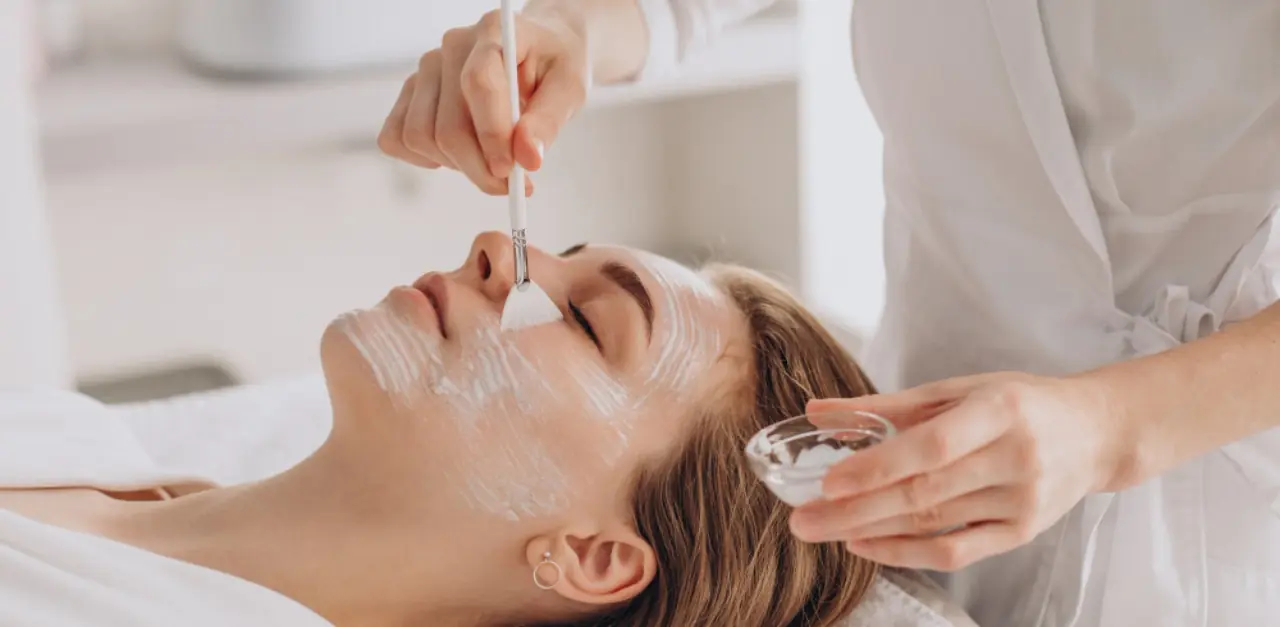What are the Effects / Benefits of Chemical Peel?
Chemical peels are versatile treatments that improve a wide range of skin concerns. They are categorized based on their depth of action: superficial, medium, and deep peels.
Superficial Chemical Peel: Targets the topmost layer of the skin (epidermis) to remove dead cells. It is gentle, with minimal to no downtime, and helps improve acne, uneven skin tone, dryness, and fine lines.
Medium Chemical Peel: Reaches the upper dermis, providing deeper exfoliation for quicker and more noticeable results. It is ideal for wrinkles, acne scars, and uneven pigmentation.
Deep Chemical Peel: Extends to the lower dermis, offering dramatic improvement in deep wrinkles, scars, and sun-damaged skin, though recovery time is longer.
Chemical peels help improve:
- Acne and acne scars
- Fine lines and wrinkles
- Irregular skin pigmentation
- Rough or scaly skin
- Dull skin
- Certain scars and sun-damaged skin
What Can I Expect After the Chemical Peel Procedure?
The recovery and visible results depend on the type of chemical peel performed:
Superficial / Light Peel: Mild redness, stinging, or flaking may occur for 1–2 days. Within a week, you can notice improvement in skin texture and radiance. Repeated sessions enhance these effects further.
Medium / Deep Peel: Redness and flaking can last up to 2 weeks. The skin gradually reveals smoother, fresher, and rejuvenated layers, with noticeable improvement in wrinkles, pigmentation, and overall tone.
What are the precautions I need to take after the procedure?
You can resume your daily activities the next day if you had a light chemical peel, while medium or deep peels may require staying indoors for 3–5 days. During this period, it’s important to keep your skin well-moisturised with dermatologist-recommended creams.
Sun protection is crucial—use a broad-spectrum, non-comedogenic sunscreen and take physical measures like wearing hats or scarves. You can resume your night cream or other prescribed skincare products once your skin has fully healed from the peel.
Who is a Suitable Candidate for a Chemical Peel?
You may opt for chemical peeling if you have:
- Acne or acne scars
- Dark spots or patches
- Uneven skin pigmentation
- Dull looking skin
- Rough dehydrated skin
- Open pores
- Fine lines and wrinkles
- Looking for maintenance of skin in good condition
How many sessions are required to see best results?
Depending on the skin concern and peel strength, usually 4–8 sessions are recommended to achieve visible and long-lasting improvement in skin texture, tone, spots, and overall radiance.
How frequently should we get the peel treatment done?
Superficial peels can be done every 2–3 weeks as they are mild and have minimal downtime. Medium peels are ideal once in 6 months, while deep peels are recommended once a year based on skin assessment.
What are the side effects?
Chemical peels are safe when performed by a trained skin expert. Mild redness or flaking may occur temporarily and can be easily managed with proper post-peel care. Individuals prone to cold sores may require preventive antiviral medication, as advised by the dermatologist, to avoid flare-ups.


